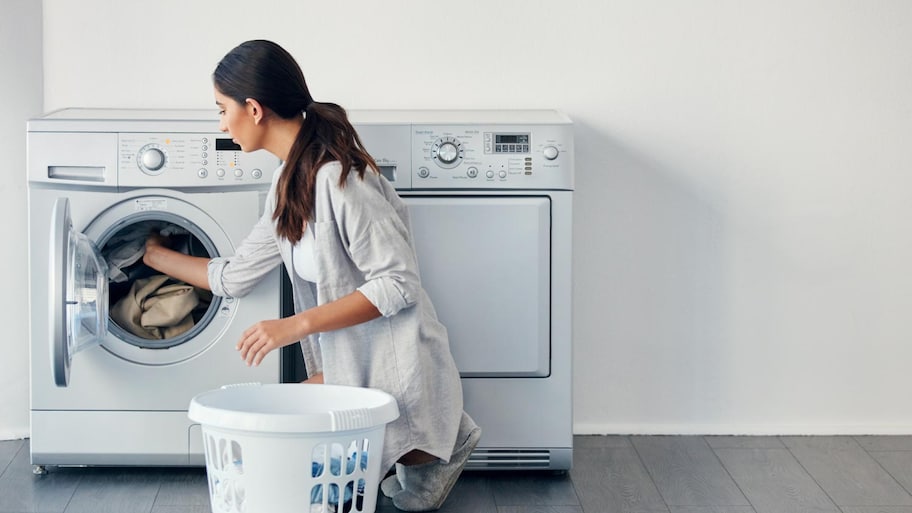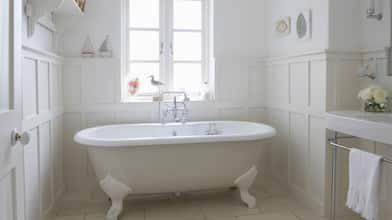If you want an instant update to your bathroom, consider changing your point of view by replacing your shower enclosure
Whether you’re talking about a guest bathroom in the basement or an ensuite, the shower enclosure is often the centerpiece of a bathroom. Shower doors are the primary component of a shower enclosure, and which shower door is right for you depends on your style and budget.
Things to Consider Before Selecting a Shower Enclosure Replacement
Project Scope
Decide whether you are replacing the shower enclosure, updating the entire shower, or doing a complete bathroom remodel. If you’re just updating the shower enclosure, you might be able to do this yourself. However, if you’re remodeling the shower or renovating the bath, you may have to hire various pros:
A local plumber to move any plumbing or add fixtures
An electrician near you to install shower lighting or fans
A bathroom tile installer to add any new tile in your shower
A bathroom designer to conceptualize the project
Cost and Installation
The cost of a new shower enclosure depends on materials, labor, and plumbing. The cost of a shower enclosure can range from as little as $500 for replacement glass to $2,000 for a prefabricated kit, to more than $10,000 for a custom-built shower. You don’t have to be a Jedi-level do-it-yourselfer to install a shower enclosure. However, if you’re intimidated by the idea of handling large glass panels, it’s probably best to hire a professional shower enclosure installer in your area.
Types of Shower Enclosure Glass
Gone are the days when frosted or clear glass were your only shower door options. When choosing glass for your shower enclosure, consider the thickness and design. Most people opt for clear glass because it’s easy to incorporate into any bathroom design theme.
Bamboo pattern textured glass lends itself to spa- or zen-themed bathrooms. Rain, frosted, opaque, and tinted glass provide a little privacy while also letting light into the shower.
1. Sliding Glass Doors
A sliding glass door in an alcove is the most common shower enclosure. An alcove shower has three walls and one threshold, which saves space in smaller bathrooms. The doors don’t swing open, so water stays inside the shower area, reducing the chance of slippery floors.
One disadvantage of sliding doors is that the bottom track accumulates soap scum and gunk. A newer Euroslide option uses a rolling system at the top of the door and eliminates the need for a track.
2. Pivot Glass Doors
Pivot glass doors are connected to the shower at the top and bottom and can swing in or out of the shower, like a regular door. Pivot glass doors can add a luxury look to a bathroom. They’re installed without the use of a track. One disadvantage of a pivot glass door is that it can drip water onto the floor when wet.
3. Frameless

Frameless shower enclosures provide a clear, unobstructed view of the shower, allowing you to show off fancy tile or shower fixtures. Frameless shower enclosures also give a bathroom a more contemporary, open, and spacious feel.
There are many pros and cons to frameless shower doors. For example, frameless shower enclosures are easier to clean. But one of their primary disadvantages is that they require heavier glass, which drives up the cost.
4. Shower Shield
Sometimes called a shower screen, a glass panel is mounted onto the side of the shower closest to the showerhead. The shield prevents water from splashing onto the floor.
A shower shield can make your bathroom more accessible for those with mobility issues if it’s installed over a threshold-less opening. That way, a person who uses a wheelchair can maneuver in and out of the shower without assistance.
5. Open
One of the more dramatic shower enclosure options are those without a shower door altogether. To pull this off you need a shower with a draining system that pulls water away from the shower entrance. One major disadvantage to an open entrance is that it requires more space than a shower enclosure with a door. You need extra space to ensure water doesn’t spill outside of the wet zone.





